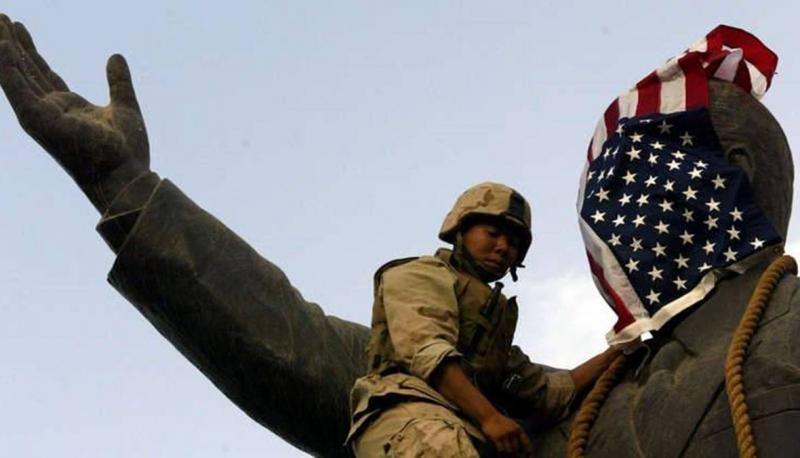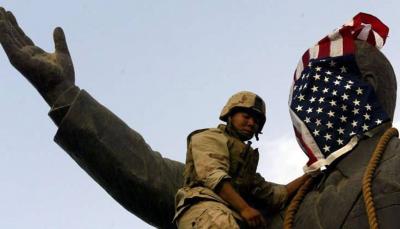On the occasion of the 21st anniversary of the fall of Saddam Hussein's regime in Iraq, the Washington Post published a report about the American flag that U.S. soldiers used to cover Saddam's face during the statue's collapse in Firdos Square in Baghdad on April 9, 2003. The newspaper visited the American soldier who still keeps the flag in his basement today. Tim McLaughlin, who joined the U.S. Navy and was a young man in 2000, brought the American flag to Iraq with the intention of taking a picture with it in a location in Iraq to later show his children and grandchildren as a memento of his military service and participation in the war.
On the morning of September 11, 2001, McLaughlin had just started his work as an officer at the Pentagon and was jogging near his workplace when a plane struck the building. He rushed to assist in the rescue operations. Shortly thereafter, a relative bought an American flag from a souvenir shop and gifted it to him; it was the same flag he took with him to Iraq.
In 2003, while in Iraq, McLaughlin attempted several times to take a picture with the flag before reaching Baghdad. His first attempt was interrupted by gunfire, and a second attempt failed when a colleague jokingly stepped on the flagpole he had found and hung the flag on it.
Three weeks after the war began, McLaughlin arrived in Baghdad with U.S. forces. As he recounts to the Washington Post, his unit's mission was to help secure the Palestine Hotel, where foreign journalists gathered. On April 9, dozens of Marine soldiers arrived at Firdos Square, which was filled with journalists from the Palestine Hotel, peace protesters, and Iraqi citizens, creating what McLaughlin describes as chaos.
An Iraqi citizen asked an American vehicle driver to pull down the Saddam statue, and after U.S. Marines intervened to assist Iraqi citizens in bringing down the statue, one of them asked McLaughlin to bring the flag. He found his way to the soldier who was tying a chain around the neck of the Saddam statue, covering its face with the American flag. McLaughlin watched from below and took a picture with his camera, as did dozens of journalists who broadcast the event live, viewed by millions around the world.
The images of the American flag sparked controversy among Iraqis and angered some Pentagon officials trying to emphasize that the U.S. military came to Iraq to liberate it, not to occupy it. On April 11, 2003, the New York Times published a report confirming the Pentagon's clear instructions "to prevent any raising of the American flag on vehicles, buildings, statues, and command centers." According to the newspaper, an order was issued to U.S. units "not to raise the flag anywhere in Iraq, except at the U.S. Embassy." Pentagon officials told the newspaper that "raising the flag on buildings in Iraq would only reinforce the anti-American sentiment that the U.S. military was here to occupy Iraq."
Images of the flag on the statue's face as it fell made front pages of American and international newspapers and were replayed on Fox News every 4.5 minutes and on CNN every 7.5 minutes, as noted by a researcher from George Washington University, according to the Washington Post's story.
In 2009, Tim McLaughlin told the newspaper's correspondent that he received a message from the National Museum of the Marine Corps asking if he would donate the flag for display as a "significant historical marker." At the time, the flag was stored in a box belonging to McLaughlin's father. Tim asked museum officials a series of questions about how the flag would be displayed and later decided that the best place for it was in his home's basement. "What the flag means to me is different from what it means to others, and I don't want it to carry all those other meanings anymore," the former American soldier told the Washington Post.




